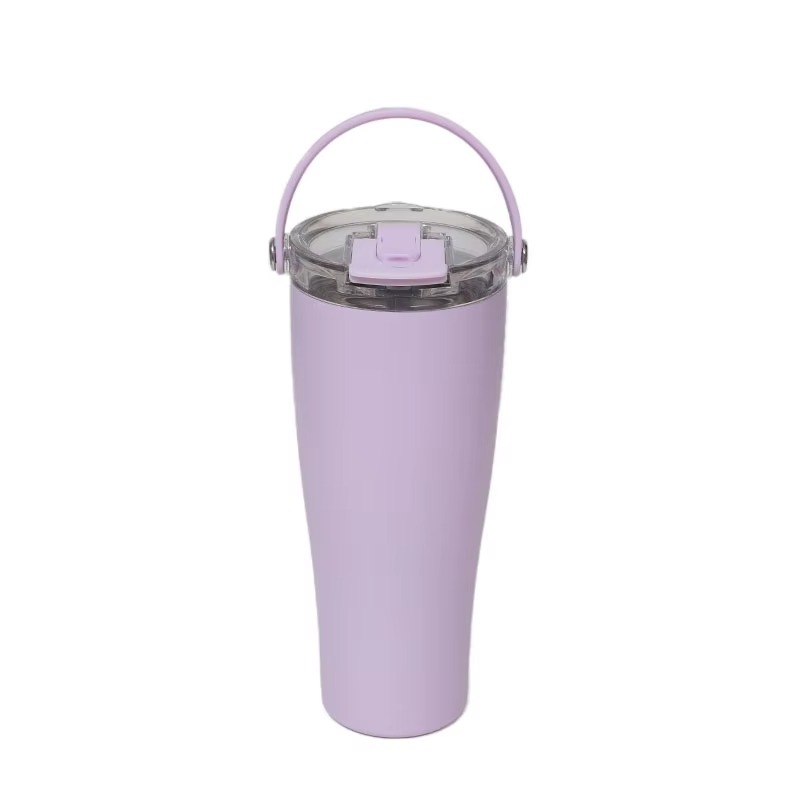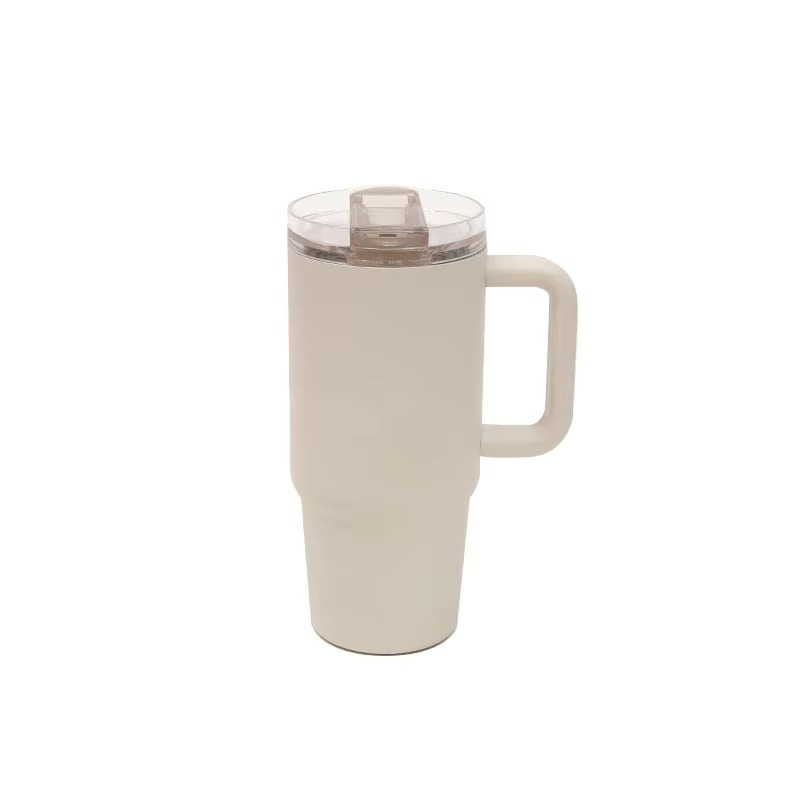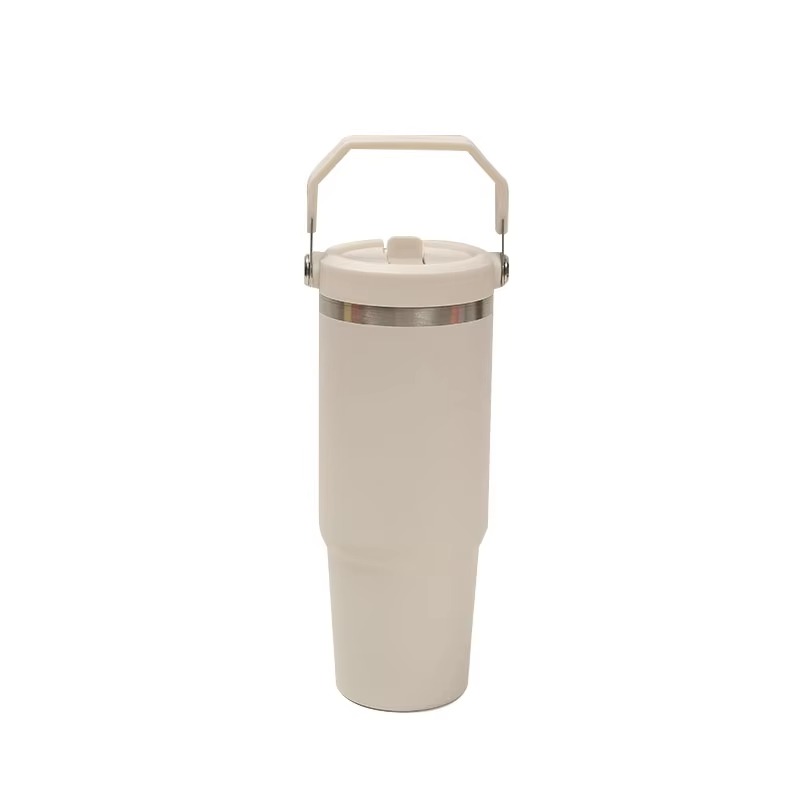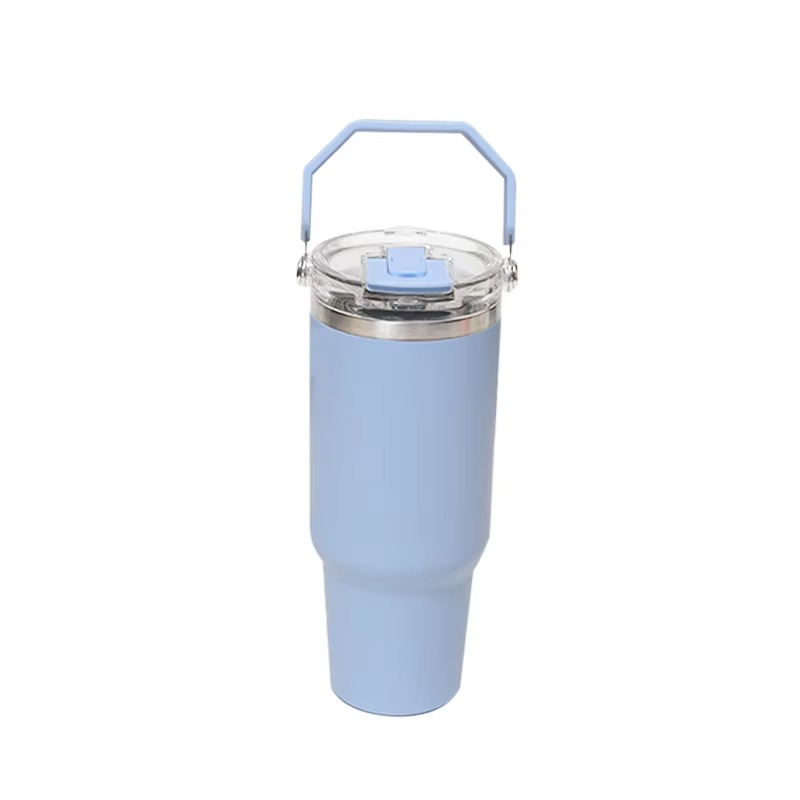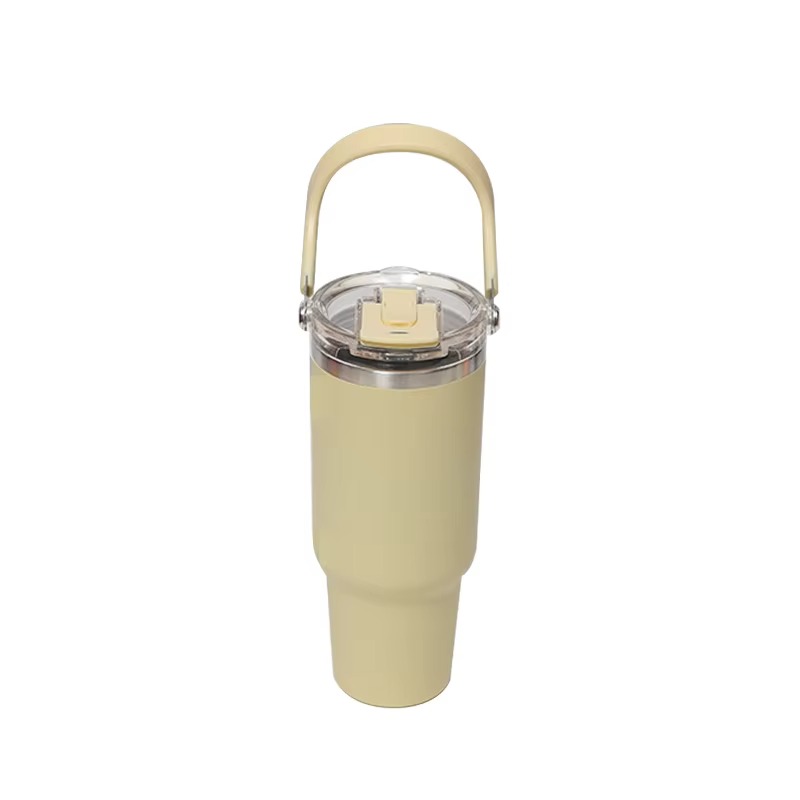For anyone who enjoys a hot beverage during a car ride, the struggle with standard mugs is a familiar one. Traditional drinkware, crafted for static spaces like kitchens and offices, fails to adapt to the dynamic conditions of vehicle travel—leading to spills, rapid heat loss, and constant worry about tipping. Auto mugs, by contrast, are purpose-built to address these challenges, merging functionality with convenience to redefine how people enjoy drinks on the go.
As urban commuting times lengthen and long-distance road trips become more common, the demand for reliable mobile drinkware has surged. Modern lifestyles, where people often work or relax while traveling, have made consistent access to hot beverages like coffee or tea a necessity rather than a luxury. This shift has placed auto mugs at the forefront of travel essentials, as they cater to the unique needs of users in motion.
This article delves into why auto mugs have become the preferred choice for in-vehicle beverage consumption. It explores their design innovations, how they meet user requirements, manufacturing standards that ensure quality, and the trends shaping their future—all while highlighting the key differences between auto mugs and regular mugs in mobile settings.
II. The In-Vehicle Environment and User Needs
Vehicle interiors present a set of challenges that regular mugs are not designed to overcome. Cup holders vary widely in size across different car models, and dashboards or center consoles rarely offer large, stable flat surfaces for placing open drinkware. Add to this the constant vibrations from the road, sudden stops at traffic lights, and sharp turns during lane changes, and the risk of spills or tipped mugs becomes unavoidable with standard options.
The need for robust in-vehicle drinkware has grown in tandem with changing lifestyle patterns. More people now use their commute time to prepare for work or unwind, and long-distance travelers often spend hours on the road without easy access to facilities for reheating drinks. For these users, the ideal travel mug must solve three core problems: keeping the beverage stable, maintaining its temperature, and preventing leaks—all while being easy to use without distracting the driver.
Auto mugs address these needs through targeted design adjustments. Their narrow, cylindrical bases are engineered to fit most vehicle cup holders snugly, reducing movement even on bumpy roads. The materials used are chosen for durability, able to withstand minor impacts from sudden jolts. Most importantly, their lids feature secure sealing mechanisms that prevent liquid from escaping, even if the mug is accidentally knocked over. These adaptations stand in stark contrast to regular mugs, which typically have wide bases, no insulation, and open or loosely fitting lids—making them ill-suited for life on the road.
III. Core Features of Auto Mugs
Auto mugs stand out from regular drinkware due to a set of features tailored specifically for in-vehicle use. Each design element is intended to solve a unique challenge of consuming beverages while traveling, ensuring safety, convenience, and consistency.
1. Vehicle-Friendly Fit and Stability
The size and shape of an auto mug are critical to its performance in a car. Most models have a base diameter between 7 and 9 centimeters—this range is carefully chosen to fit the majority of standard vehicle cup holders, eliminating excessive wobble. Many auto mugs also feature a slightly tapered body, which not only makes them easier to grip but also reduces the risk of tipping if the car shifts suddenly.
Ergonomics play a key role here too. Textured grips or contoured bodies prevent the mug from slipping out of the user’s hand, even if their palms are sweaty. Some designs also include a lower center of gravity, which adds an extra layer of stability, ensuring the mug stays upright even during sharp turns or sudden braking.
2. Advanced Temperature Control
One of the most valued features of auto mugs is their ability to maintain beverage temperature for extended periods. Unlike regular mugs, which lose heat quickly to the surrounding air, auto mugs use specialized insulation or heating technologies to keep drinks hot (or cold) for hours.
Double-wall vacuum insulation is a common choice in many models. This design creates a gap between two layers of material—usually stainless steel—that traps air (or a vacuum), significantly reducing heat transfer. As a result, a hot cup of coffee poured into an insulated auto mug can stay at a drinkable temperature for 4 to 6 hours, and sometimes longer.
For users who spend very long hours on the road, some auto mugs also come with built-in heating elements that connect to a vehicle’s 12-volt power outlet. These models allow users to adjust the temperature slightly, ensuring their beverage stays at their preferred warmth from the start to the end of a long trip.
3. Leak-Proof and Spill-Resistant Design
Leakage is one of the biggest concerns with in-vehicle drinkware, and auto mugs address this with sophisticated lid designs. Most lids feature multiple sealing layers—often made of food-grade silicone—that create a tight barrier between the liquid inside and the outside. Some lids also include a one-way valve or a flip-top closure that only opens when the user drinks, preventing spills even if the mug is turned upside down.
The durability of the lid is another key consideration. Auto mug lids are made from tough plastics or composites that can withstand repeated opening and closing, as well as the occasional impact from being dropped. This robustness ensures the seal remains effective over time, unlike the flimsy lids often found on disposable cups or basic mugs.
4. Durable Materials for Long-Term Use
Auto mugs are built to withstand the rigors of vehicle travel, so material selection is carefully considered. Stainless steel is a popular choice for the body of the mug, as it is resistant to rust, corrosion, and scratches—common issues in a car environment where the mug may rub against other items in the cup holder.
High-grade plastics, such as BPA-free polypropylene, are used for parts like the lid or grip, as they are lightweight yet strong. Some models also use composite materials that combine the strength of metal with the lightness of plastic, making the mug easy to carry while still being durable enough to handle daily use.
These materials not only ensure the mug lasts for years but also meet strict safety standards for food contact, ensuring no harmful chemicals leach into the beverage.
5. Convenience for On-the-Go Use
Auto mugs are designed to be used with one hand—a crucial feature for drivers, who need to keep their other hand on the wheel. Flip-top lids that can be opened with a thumb, or push-button closures that require minimal force, allow users to take a sip without looking away from the road.
The overall size of the mug is also optimized for convenience. Most auto mugs hold between 350 and 500 milliliters of liquid—enough to satisfy a user’s needs for a commute or a short trip, but not so large that it becomes cumbersome to handle or takes up too much space in the cup holder. Some models also have a slim profile that fits easily in backpacks or tote bags, making them suitable for use beyond the car, such as at the office or during walks.
IV. Manufacturing Standards for Quality Auto Mugs

The reliability of auto mugs depends largely on the manufacturing processes and standards used to produce them. Reputable manufacturers follow strict protocols to ensure each product meets the functional and safety needs of users, from material selection to final inspection.
Quality control starts with the sourcing of materials. Manufacturers prioritize food-grade materials that are certified safe for contact with beverages, such as 18/8 stainless steel (which is resistant to corrosion) and BPA-free plastics. These materials undergo testing to ensure they do not react with hot liquids or release harmful substances, even after repeated use.
Many manufacturers also adhere to international quality management systems, such as ISO 9001, which sets standards for consistency in production. This includes standardized processes for molding the mug body, assembling the lid and seal, and testing the insulation. For example, each batch of mugs may undergo a leak test—where the mug is filled with liquid, sealed, and turned upside down for a set period—to ensure no leakage occurs.
Certifications from regulatory bodies further validate the quality of auto mugs. Certifications like FDA (Food and Drug Administration) in the United States or LFGB (Lebensmittel-, Bedarfsgegenstände- und Futtermittelgesetzbuch) in the European Union confirm that the materials used are safe for food contact. These certifications are essential for consumers, as they provide assurance that the mug is free from harmful chemicals and meets strict health standards.
Production efficiency is also a focus for manufacturers. Large-scale facilities often use automated machinery for tasks like molding and assembling, which reduces the risk of human error and ensures consistency across batches. For example, automated welding machines may be used to join the double walls of insulated mugs, ensuring a tight seal that maximizes heat retention.
Supply chain management is another key aspect of manufacturing. Manufacturers work closely with suppliers of lids, seals, and insulation materials to ensure each component meets the same quality standards as the mug body. This coordination helps reduce variability in the final product, ensuring that every auto mug performs as expected.
V. Auto Mugs vs. Regular Mugs: A Clear Comparison
The differences between auto mugs and regular mugs become most apparent when used in a vehicle. While regular mugs may work well at home or in the office, they lack the features needed to perform reliably in a dynamic travel environment. Below is a detailed comparison of the two:
| Feature | Auto Mugs | Regular Mugs |
|---|---|---|
| Stability | Narrow base fits cup holders; low center of gravity reduces tipping. | Wide base often doesn’t fit cup holders; prone to tipping on bumpy roads. |
| Spill Resistance | Sealed lids with multiple layers; one-way valves prevent leakage. | Open or loosely fitting lids; high risk of spills during movement. |
| Temperature Retention | Double-wall insulation or heating elements; keeps drinks hot for 4–6+ hours. | No insulation; heat lost rapidly (often within 30 minutes). |
| Durability | Made of stainless steel or tough plastics; resistant to impacts and corrosion. | Often made of ceramic or thin plastic; prone to chipping or breaking. |
| Convenience | One-handed operation; slim design fits cup holders and bags. | Requires two hands to use; may be too large for cup holders. |
| Safety | Food-grade materials; designed to prevent hot liquid spills. | Ceramic can shatter, causing injury; no seal to prevent burns from spills. |
In summary, regular mugs are designed for stationary use, where stability and temperature retention are not major concerns. Auto mugs, by contrast, are engineered to thrive in the mobile environment of a vehicle, solving the specific problems that regular mugs cannot address.
VI. How Consumers Use Auto Mugs Today
Consumer usage patterns for auto mugs reflect the diverse needs of people on the move. From daily commuters to long-distance travelers, different groups rely on auto mugs for different reasons, but all value their functionality and convenience.
Daily commuters form a large portion of auto mug users. Many people start their day with a hot cup of coffee or tea, and an auto mug allows them to take this beverage with them on their drive to work. The insulation ensures the drink stays hot until they reach their destination, eliminating the need to stop for a refill or drink a cold beverage. Commuters also appreciate the spill resistance, as it means they don’t have to worry about cleaning up stains on their car seats or floor mats.
Long-distance travelers, such as families going on vacation or professionals driving to meetings in other cities, also rely heavily on auto mugs. For these users, the ability to keep drinks hot for hours is a key benefit—they can pour a drink at home and still enjoy it warm several hours later, without having to rely on gas station coffee or fast-food outlets. Some travelers also use auto mugs for cold drinks, as the insulation works equally well to keep beverages cool.
Ride-share drivers and delivery workers, who spend most of their day in their vehicles, are another group of frequent users. These professionals often don’t have time to stop for meals or drinks, so an auto mug allows them to stay hydrated and energized throughout their shift. The one-handed operation is particularly important for them, as it lets them take a sip without disrupting their work.
Consumer feedback, shared through online reviews and social media, highlights the features that matter most. Many users mention cup holder fit and leak resistance as top priorities, followed by temperature retention. Positive reviews often note how an auto mug has “changed their commute” or “eliminated the stress of spills,” while negative reviews typically focus on issues like poor lid seals or mugs that don’t fit their car’s cup holders.
This feedback plays a role in shaping product development, as manufacturers use it to refine their designs. For example, if many users complain about a lid that is hard to clean, a manufacturer may redesign the lid to be more disassemblable, making it easier to remove residue.
VII. Maintenance, Safety, and Environmental Benefits
To get the most out of an auto mug, proper maintenance is essential. Fortunately, most models are designed to be easy to clean and care for, ensuring they remain functional for years.
Cleaning an auto mug typically involves disassembling the lid (if possible) and washing all parts with warm, soapy water. Many lids have removable seals or valves, which should be cleaned separately to prevent the buildup of coffee or tea residue. Most auto mugs are also dishwasher-safe, but it’s important to check the manufacturer’s instructions—some models with heating elements may need to be washed by hand to avoid damaging the electrical components.
Regular maintenance also includes checking the lid seal for wear and tear. Over time, silicone seals may become cracked or lose their elasticity, which can reduce leak resistance. Replacing these seals (many manufacturers sell replacement parts) can extend the life of the mug and ensure it continues to perform well.
Safety is another key consideration for auto mug users. It’s important to avoid overfilling the mug, as this can cause liquid to spill out when the lid is closed. Users should also be careful when opening the lid of a hot beverage, as steam can escape quickly and cause burns. For mugs with heating elements, it’s crucial to use the correct power source (usually a 12-volt vehicle outlet) and avoid leaving the mug plugged in when not in use, to prevent overheating.
Beyond functionality and safety, auto mugs also offer environmental benefits. By using a reusable auto mug, consumers reduce their reliance on disposable cups—many of which end up in landfills or oceans. Disposable coffee cups are often lined with plastic, making them difficult to recycle, so switching to a reusable auto mug is a simple way to reduce waste. This aligns with growing consumer awareness of environmental issues, as more people seek out sustainable alternatives to single-use products.
VIII. Future Trends in Auto Mug Design
As mobile lifestyles continue to evolve, auto mug design is expected to keep pace with new technologies and user needs. Several trends are emerging that will shape the future of these essential travel accessories.
1. Advanced Material Innovations
Manufacturers are exploring new materials to improve the performance of auto mugs. Lightweight composites, which combine the strength of metal with the flexibility of plastic, are becoming more popular. These materials reduce the overall weight of the mug, making it easier to carry, while still maintaining durability and insulation.
Another area of innovation is eco-friendly materials. Some manufacturers are experimenting with plant-based plastics or recycled materials for parts of the mug, such as the lid or grip. This not only reduces the environmental impact of production but also appeals to consumers who prioritize sustainability.
2. Integration with Vehicle Technology
As cars become more technologically advanced, auto mugs are likely to integrate with these systems. For example, future models may be designed to work with a vehicle’s infotainment system, allowing users to check the temperature of their beverage via the car’s touchscreen. Some mugs could also be compatible with wireless charging pads in newer cars, eliminating the need for a 12-volt power cord.
Manufacturers are also paying closer attention to cup holder design in modern vehicles. As cars adopt sleeker, more compact interiors, auto mugs may be designed with even slimmer profiles to fit these new cup holder sizes, while still maintaining stability and capacity.
3. Enhanced Thermal Performance
Insulation technology is expected to improve, with future auto mugs able to keep beverages hot or cold for even longer periods. Advances in vacuum insulation, such as thinner walls with better heat retention, could extend the temperature control time to 8 hours or more. For heated models, more efficient heating elements that use less power may become common, reducing the drain on the vehicle’s battery.
4. Personalization and Customization
Consumers increasingly want products that reflect their personal style, and auto mugs are no exception. Future models may offer more customization options, such as interchangeable lids in different colors, or the ability to add a personalized engraving. Some manufacturers may also offer limited-edition designs or collaborations with artists, making auto mugs not just functional but also fashionable accessories.
5. Smart Features for Convenience
Smart technology could be integrated into auto mugs to enhance convenience. For example, a mug with a built-in sensor could send a notification to the user’s phone when their beverage is reaching the ideal drinking temperature. Another feature could be a lid that automatically locks when the car is in motion, preventing accidental spills if the mug is knocked over.
IX. Conclusion
Auto mugs have become an essential accessory for anyone who enjoys beverages while traveling, solving the key challenges that regular mugs cannot address in a vehicle environment. Their stability, leak resistance, temperature retention, and convenience make them the ideal choice for daily commuters, long-distance travelers, and anyone else who spends time on the road.
The success of auto mugs lies in their purpose-driven design—every feature, from the narrow base to the sealed lid, is engineered to meet the unique needs of users in motion. Backed by strict manufacturing standards and quality certifications, these mugs offer reliability and safety, ensuring users can enjoy their beverages without worry.
As lifestyles become more mobile and environmental awareness grows, the demand for auto mugs is likely to increase. Future innovations in materials, technology, and design will only enhance their functionality, making them even more indispensable for people on the go. Whether you’re driving to work, taking a road trip, or simply running errands, an auto mug ensures you can enjoy a hot (or cold) beverage whenever and wherever you want—without the hassle of spills or cold drinks.

 English
English Español
Español русский
русский
